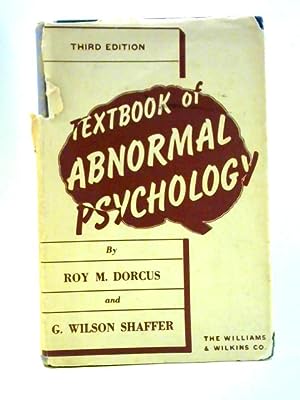SEPTEMBER 4, 2024 – (Cont,) Many families experience splits, rifts, friction, upheavals, estrangement. The fractures in our own—cousin vs. cousin (Carol’s father vs. my uncle) and, it seemed, brother vs. brother (Carol’s grandfather vs. mine)—were not unusual as families go. Only a specialisit in abnormal psychology, however, could categorize the discord that ebbed and flowed between Uncle Bruce (UB) and just about everyone else in the family except Mother and Gaga (our grandmother) and Jenny, the baby of the family who never told him what he should do except to be careful when he found his way from Rutherford over to her and GK’s Manhattan apartment and back again for Thanksgiving or Christmas dinner. UB simply had lots of unusual disturbances going on inside his heart, mind and soul. After a period of feeling intense anger and frustration over his antics, I learned how to cut him slack and reconcile my world view to the “world according to UB.” I came to terms with him when I realized that if he was manacled to his influences, I had the freedom—should I choose to exercise it—to adjust my attitude toward him and accept him for what and who he was.
Sadly, familial reconciliation isn’t as common as familial divorce. Perhaps the atomic weight and chemical structure of negative emotions are simply heavier and more complex than the makeup of positive emotions. Habit comes into play as well. I remember on the first trip that Jenny and I took to Sweden to meet relatives on our father’s side, we stumbled headlong into a long-standing estrangement among several of our dad’s cousins. Dad got along with all his cousins and was oblivious to the rift. When Jenny and I asked our cousins (one generation removed) what had caused the problem, no one could remember. All they knew was that certain members of the family weren’t talking to other members. [1]
Among the Holmans, Mother was the diplomat, the messenger, the reconciler. She enjoyed the love, respect and trust of everyone, even UB in all but his most irascible moods. As I learned from the correspondence I’d uncovered after all the personae dramatis had passed from this life, she’d tried tirelessly to reconcile differences, to work toward family peace. If she ultimately failed—UB being as stubborn as he was otherwise difficult—she retained her role as messenger. In that capacity she’d learned of Carol and Barry’s personal tragedy—their daughter’s untimely death at age 19 after a courageous battle with Hodgkin’s lymphoma.
By the time this information had found its way to Mother, however, and subsequently to my sisters and me (I have only a vague recollection of it), the tragedy and the people involved seemed quite removed from our busy lives. Only years later—2022, to be exact—did the loss register with me. That was when Carol learned that I was undergoing treatment for multiple myeloma. She called me and shared her daughter’s story, which, of course, was her family’s story. Carol was all too familiar with what I was then experiencing, and because of her knowledge, her understanding and empathy was especially appreciated. What stood out most, though, was her own courage, inspiration, support and encouragement.
Now, after two days of near continuous conversation among us, Carol told Jenny (who had heard nothing of it before) and me more details of the family’s ordeal. There could be no greater loss. And where was our side of the family in Carol and Barry’s time of need? I thought. Missing in action. Our excuse? Estrangement over . . . over what? Lucre? Disagreement over how to split the business, the source of the family’s wealth and future prosperity? What amount of money, property, stuff, things could possibly matter more than the life of a child at the gates of adulthood and so full of promise? As tears welled up in Carol’s eyes—and Jenny’s and mine—I thought of the tears that flowed when Carol’s grandparents were informed of the earlier tragedy: the death of their oldest child when he was only a year or two older than Carol and Barry’s daughter when she died.
But our reunion enjoyed far more joy and sunshine than sadness and shadows. The remarkable coincidence that brought Carol’s younger sister, Susan, and Susan’s husband Bob to Lyme Light in the morning of Day Two was part of that joy and sunshine. It would brighten the front veranda long after the sun had set and the table had been cleared after a sumptuous baked salmon dinner al fresca and enormous apple pie dessert shared not only by us long lost cousins and our spouses but by the next two generations—Byron and Mylène and their son Diogo—and by our next-door neighbors Steve and Lin, who are friends close enough to be our family too. (Cont.)
Subscribe to this blog and receive notifications of new posts by email.
© 2024 by Eric Nilsson
[1] Fortunately, as the result of some backstage diplomacy (I believe at our generation level) all the cousins attended the reunion in celebration of our visit. We were thus able to inform Dad upon our return to the U.S, that yes, we’d gotten to meet all his cousins. The rapprochement that was prompted by our visit held up for our parents’ visit several months later and endured thereafter.
